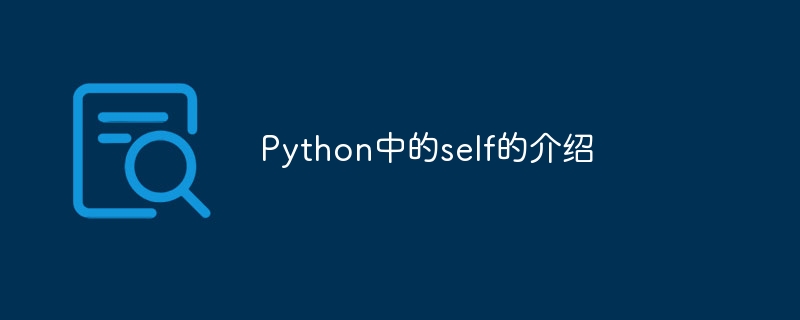Home >Backend Development >Python Tutorial >Introduction to self in Python
Introduction to self in Python
- PHPzOriginal
- 2024-02-23 16:03:031062browse

Introduction to self in Python
In Python, self is a special keyword used to represent the instance object of the class itself. In a class method, the properties and methods of the object are referenced through self. The self parameter is not mandatory in Python and can be replaced by any other name, but it is customary to use self to represent it.
In the class method, the self parameter must be passed in as the first parameter, indicating a reference to the current object. Through self, we can access the properties and methods of the class and call other methods.
Below we illustrate the use of self through a specific example:
class Person:
def __init__(self, name, age):
self.name = name
self.age = age
def say_hello(self):
print("Hello, my name is", self.name)
print("I am", self.age, "years old.")
person = Person("Tom", 25)
person.say_hello()In the above code, we define a Person class, which contains two attributes name and age, and defines A say_hello method. In the say_hello method, we refer to the object's attributes name and age through self, and output the corresponding information.
Next we create an instance object person of Person and call the say_hello method. In the process of calling the say_hello method, a reference to the person object is automatically passed in as the self parameter. Therefore, self.name inside the say_hello method represents the name attribute of the person object, and self.age represents the age attribute of the person object.
Execute the above code, the output result is:
Hello, my name is Tom I am 25 years old.
Through this example, we can see that through self we can access the properties and methods of the class, making the code clearer and easier to understand. At the same time, we can also call other methods through self inside the class to realize mutual calling of methods.
It should be noted that when referencing properties and methods within a class, they must be referenced through self, otherwise an error will be reported. For example, in the say_hello method, if you do not use self to refer to the attributes name and age, but use name and age directly, the error NameError: name 'name' is not defined will occur.
In Python, using self to represent the instance object of a class is a conventional way of writing, in order to more clearly distinguish the attributes and methods of classification. Although sometimes other names can be used instead of self, in order to avoid conflicts with other variable and method names, it is recommended to use the conventional writing method of self.
To sum up, self is the keyword in Python that represents the instance object of the class itself. It passes the reference of the object to the method so that we can access the properties and methods of the object in the method. Through the use of self, the code can be made clearer and easier to understand, and methods of classes can be called to each other.
The above is the detailed content of Introduction to self in Python. For more information, please follow other related articles on the PHP Chinese website!

